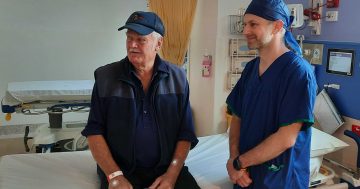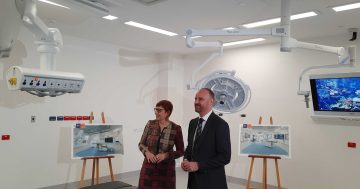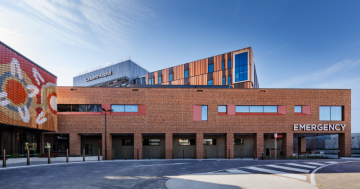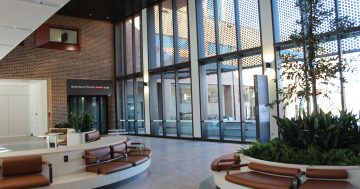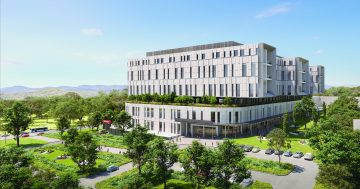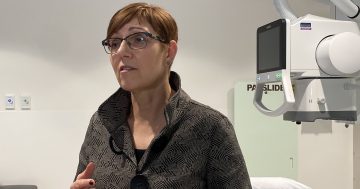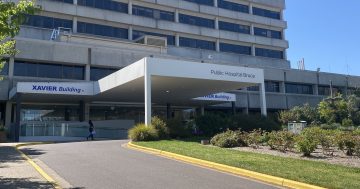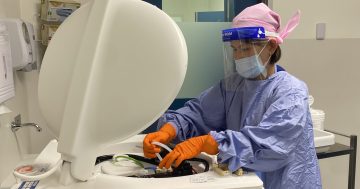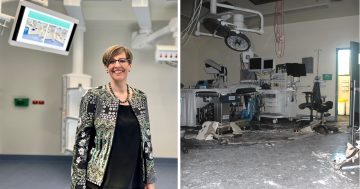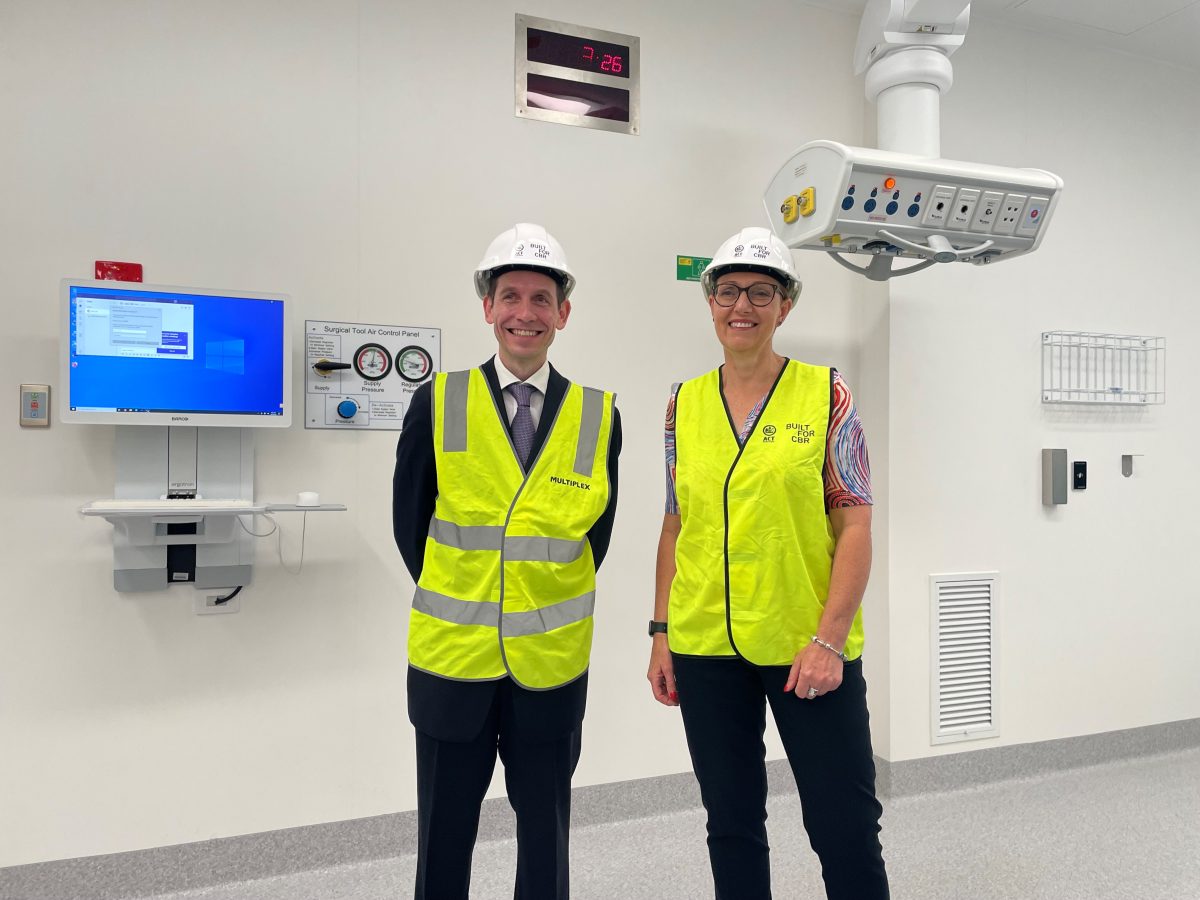
The clinical director of anaesthetics, Dr Lance Lasersohn, and Health Minister Rachel Stephen-Smith in one of the new operating theatres. Photo: CHS.
New state-of-the-art operating theatres at the Canberra Hospital will boost capacity, enable a wider range of procedures to be performed, and provide a more seamless experience for patients and clinicians.
Health Minister Rachel Stephen Smith unveiled the theatres in the new Critical Services Building, some of which have been equipped with cutting-edge imaging technology to provide surgeons with real-time images.
The completion of the new theatres marks a significant milestone in the delivery of the Critical Services Building, which will include 22 new theatres, a bigger emergency department, an expanded ICU and new inpatient wards.
Situated on level 3 of the new building, the theatres boast a range of advanced features that will revolutionise surgical practices in the ACT.
An Intraoperative Magnetic Resonance Imaging (iMRI) Suite will provide neurosurgeons with real-time images of the brain during procedures.
Three hybrid theatres equipped with cutting-edge angiography and CT angiography systems will support a variety of vascular surgeries and guided procedures.
Two Interventional Radiography Suites have been relocated from Building 12 and will offer a comprehensive range of diagnostic and interventional services.
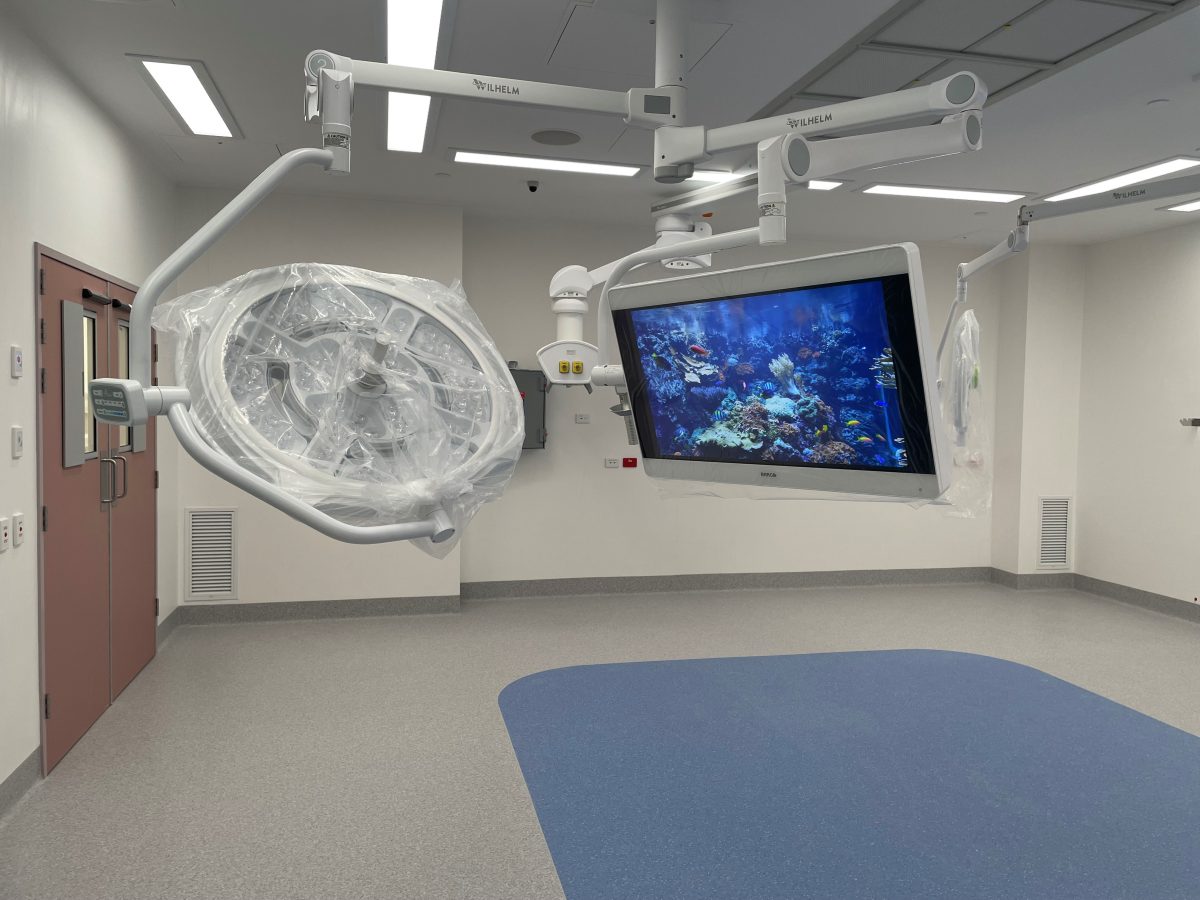
Pendants in one of the operating theatres. Photo: CHS.
Sixteen theatres will be digitally connected to provide an integrated flow of data, including images and video, displayed on a single device.
Ms Stephen-Smith said the theatres will have technology that has never been used before in the ACT public hospital system.
“These theatres have been designed with feedback from our clinicians and experts, so they’re getting the equipment that they have said they need and are being operated in a way that is going to work for them.”
Ms Stephen-Smith added that the modern facilities would also help attract and retain quality clinicians.
“We are really building a virtuous circle of fantastic infrastructure with existing great staff, attracting new fabulous staff and then delivering better patient outcomes for the people of Canberra and the surrounding region,” she said.
Ms Stephen Smith hoped the new theatres would also mean fewer delays for elective surgery, particularly when emergency surgery had to be performed.
“We’ll be looking at how we can continue to use this expansion of our theatre space to get through more elective surgery as well as emergency surgery,” she said.
“What this theatre suite will mean is that we’ll have that extra capacity when we have a busy day of emergency surgery.
“We won’t be having to reschedule elective surgery because we’ll have the space and the capacity for those teams who are ready to go to do that elective surgery to actually have a theatre operating.”
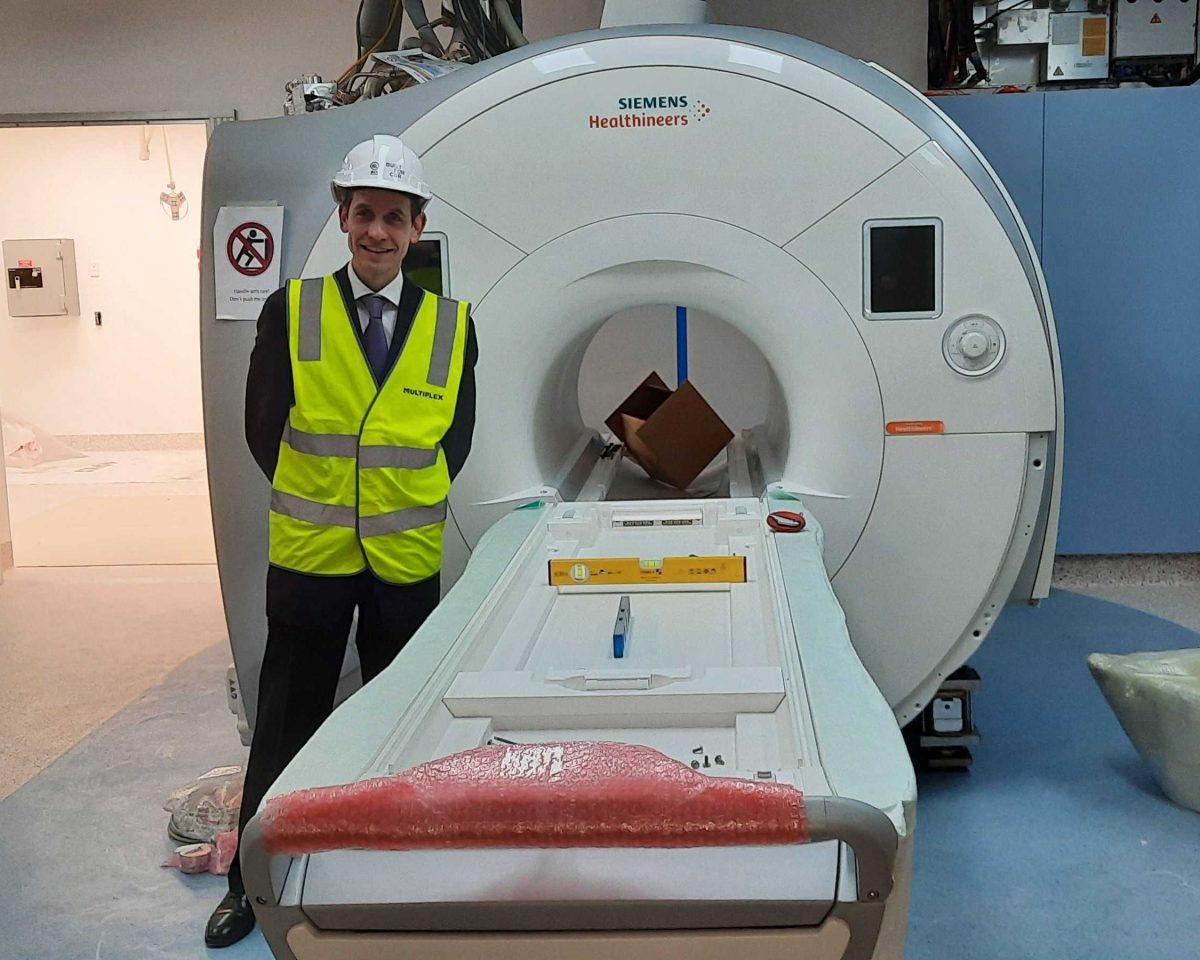
Dr Laserohn in the MRI unit attached to neurosurgery. It will provide real-time images for surgeons. Photo: Ian Bushnell.
Ms Stephen-Smith said some of the existing theatres in Building 12 will be retained for obstetrics and gynecology to deal with emergencies at the nearby Centenary Hospital for Women and Children.
Canberra Health Services’ clinical director of anaesthetics, Dr Lance Lasersohn, said equipping theatres with the latest imaging technology was groundbreaking.
“I don’t know if there is in Australia the same kind of theatre where you can provide MRI and angiography at the same time,” he said.
“That’s one of the services that will be extended, and then as capacity comes online, it means that we can provide more services across a whole range of different surgical divisions.”
Dr Laserohn said bringing imaging in-house would mean patients would not have to be moved out of surgery and surgeons could have access to scans at their fingertips.
“There will be quite a range across all different surgical disciplines of things that are going to improve and then extending the ability to branch into much more novel techniques,” he said.
This would mean patients would not have to travel outside Canberra for some procedures, such as brain and cardiac surgery.
Ms Stephen-Smith said the recruitment drive to find the staff to run the new building was continuing, including outreach to New Zealand and an upcoming visit to the UK and Ireland, as well as within Australia.
The new building is on track to open later in the year.












